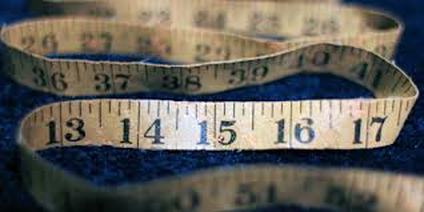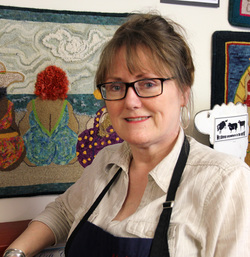Customers ask why can they buy a supposedly hand-hooked rug up the street for a fraction of the cost compared to what they see in my shop and I explain that those rugs are made in China using goodness knows what, possibly a machine, whereas, the rugs in my shop and other local venues are selling the traditional, handmade craft as our grandparents would have constructed. Generally the nod of the head ensures that they understand the price difference and one more person is educated to appreciate what goes into this art form.
When making out the price tag, it is never fair to undervalue your rugs as that sets up an unrealistic expectation in the buying community and makes it more difficult for others to ask for reasonable pricing. If someone sells rugs or their handiwork just to recoup the cost of materials and disregards their time and effort because they have fun doing it, that does little to educate the buying market of the true value of our talents.
Whether you are selling your hooked mats or setting a value for insurance purposes or for a show, it helps to have a realistic set of pricing guidelines. Most shop and gallery owners will ask you to set a price on your own work. That creates a dilemma. Do you price to recover your cost? Do you want some return on your labour and creativity? What is the value in today’s market and is it worth selling a piece?
The Lighthouse Hookers, the South Shore branch of the Rug Hooking Guild of Nova Scotia, (RHGNS) had some lively discussions, came up with a chart and tested it on three different hooking styles: a wide cut primitive mat with recycled fabrics, a fine cut pillow with fine shading in purchased dyed wool and a wall hanging with special techniques and a variety of fibers. The guideline seems to work and the results are available to all Maritime hookers.
We used three existing guidelines as a basis for discussion. The RHGNS approved a set of guidelines in June, 2002. These were published in the Rug Hooking magazine and revised at a teacher’s branch workshop in 2005. We wondered if they would still work today. The second set was from the Rug Hooking Guild of Newfoundland and Labrador and the third, designed to price commissions, was published in the Spring 2011 issue of Rug Hooking Magazine. The end result was a slightly modified and updated version of the RHGNS guidelines. Our members felt that it most closely reflected their style of hooking and suited the local market conditions.
Criteria
Amount per square foot
Basic price on burlap, monks cloth and rug warp $80.00
Basic price on linen $90.00
Original design, depending on complexity $12.00 - $20.00
Dyed new woven wool, custom dyed by hooker $30.00
Dyed new woven wool, purchased $6.00
Recycles wool as is $ 6.00
Recycled wool, over-dyed $10.00
Intricate shading, 75% of work $15.00
Intricate shading, 50% of work $10.00
Fine cut strips (#3 and #4) $10.00
Wider cut strips (#5 - #8) $8.00
Sculptured hooking $20.00
Other materials (fibres, roving, metallic threads, embellishments, etc.) Recover cost
Marketing costs (gallery commissions, promotional flyers, show entry fees ) Recover cost
Quality of work, including finishing Subjective
Visual appeal Subjective
- Basic price includes backing, printed commercial pattern and allowance for time/labour
- Adapted design category was deleted because of copyright issues
- Quality of work and visual appeal are the “WOW” factor and must be evaluated by the artist
Multiply the width x length 22 x 33 = 726 square inches
Divide 726/144 = 5.0146 square feet
Multiply 5.0146 x (price calculated from criteria ex. $120.00) = $601.75 ($600.00)








 RSS Feed
RSS Feed






